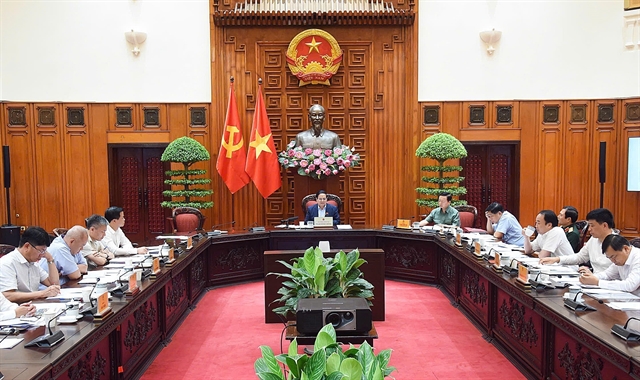 Economy
Economy

The domestic garment and textile industry wants to revise a development plan to 2020 with vision for 2030, to match the progress of the country.
 |
| A production line of Sunrise Spinning Company Ltd, in the northern province of Nam Định. Photo Danh Lam |
HÀ NỘI – The domestic garment and textile industry wants to revise a development plan to 2020 with vision for 2030, to match the progress of the country.
The current plan was approved in April 2014, and it is expected that Việt Nam garment exports will reach between US$20 billion and $25 billion by 2020. However, in 2015, the garment sector already earned an export turnover of $27.5 billion. All the garment and textile businesses have actively taken advantage of opportunities through trade agreements such as the Trans-Pacific Partnership (TPP), Vietnam-Korea Free Trade Agreement (VKFTA), and Vietnam-EU Free Trade Agreement (EVFTA).
Vũ Đức Giang, chairman of the Viet Nam Textile and Apparel Association (VITAS) said the industry was facing numerous challenges as many of its companies had closed down or halted production. Therefore, the industry wanted the Government to revise the plan as it was inappropriate and regressive. The Government should outline another long-term plan until 2040 to help the industry’s progress go in line with the country’s economic development.
According to VITAS, with the current growth, the sector has set export turnover at between $40 billion and $50 billion by 2020, instead of targets set in the current plan.
Vitas estimated that between 1988 and 2012, the sector attracted 1,551 FDI projects. Of this figure, there were 1,193 garment projects and 358 fibre production projects with a total investment of $3.5 billion. Thanks to the FDI influence, such businesses brought $2 billion into Việt Nam to the garment sector in 2015.
As a result, the total export turnover of the garment sector reached $24 billion in 2014 and $27.5 billion in 2015, and it is expected to reach $31 billion by late 2016.
Giang said that apart from the five key export products, Việt Nam also exported various kinds of fibre with an export turnover of over $3 billion annually and different types of fabric with a turnover of $1 billion per year.
Apart from the rapid production scale and strong export growth, the garment sector has also coped with unresolved shortcomings. These shortcomings needed to be handled soon to make the sector’s development sustainable.
VITAS has also proposed that the Government initiate policies to attract investments in this sector, including high-quality fibre production and dyeing projects.
In doing so, VITAS has also asked the Government to take a relook at industrial parks or key economic zones including those from the garment and textile sector.
Over the years, the garment and textile industry has not had specialised industrial zones to attract investments in textile and dyeing. As a result, the sector still relies on importing high-quality fibre for manufacturing export products, and it cost $15billion in 2015.
In addition, Giang said the Government needed to invest in infrastructure development, and create incentives for investors. Special attention should be paid to the production units and the origin of textile fibre and threads, and dyeing.
To obtain these, VITAS has asked the Government to pay great attention to investment in international quality waste water treatment plants. – VNS









